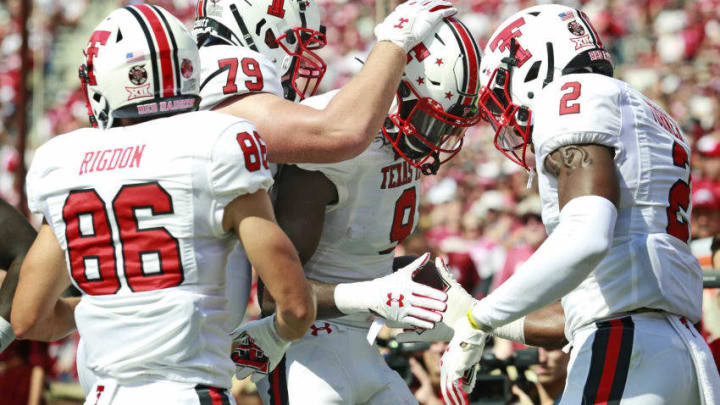
The offense is not playing well on first down
We often focus on how well teams perform on 3rd down. But we have to look at first down to understand where Tech is struggling.
Against Arizona, it might appear that the offense was rather efficient on that down. Even when factoring in penalties, Tech averaged 6.7 yards per play on 1st down.
However, when you subtract the 39-yard first-quarter T.J. Vasher reception and the 66-yard 3rd-quarter McLane Mannix catch and run, it is apparent that for the rest of the game, Tech struggled on 1st down.
Averaging just four yards per play when the two biggest plays of the game were taken out of the equation, Tech was far less efficient on 1st down the rest of the game. That included both Alan Bowman interceptions, two penalties, and 13 plays of two yards or less.
It got worse for the Red Raiders in Norman, as expected with Bowan out. But let’s look a little deeper to see where the offense missed opportunities to help its backup QBs in a hostile atmosphere.
Again, at first glance, it looked like the offense was effective on 1st down averaging 5.8 yards per snap. But when you put the picture in the frame, it looks much different.
58 of Tech’s 151 1st-down yards came on SaRodorick Thompson’s second-quarter run. What’s more, Tech picked up 30 more yards on back-to-back OU penalties in the third quarter. Take those 88 yards out of the equation, and Tech averaged just 2.7 yards on first down.
With backup QBs Jackson Tyner and Jett Duffey leading the offense, Tech threw the ball on 1st down just five times. That means the running game was expected to put the offense in better shape than it was able to. On the 14 first-down rushing plays Tech attempted, other than the 58-yard Thompson run, the average gain was just two yards.
What has happened to the idea that the Red Raiders would be able to run when they wanted to as Wells said would be the case in the offseason? That hasn’t been what we’ve seen, which isn’t all that surprising considering how the same group of offensive linemen struggled to open holes a year ago.
First down is a key for Yost’s tempo offense because any semblance of momentum on first down allows the Red Raiders to get their up-tempo attack revved up. Playing fast is when Jett Duffey is more comfortable because the calls are simpler and the defense has less time to adjust. But for that to happen, Tech must be better on 1st down on a consistent basis.
